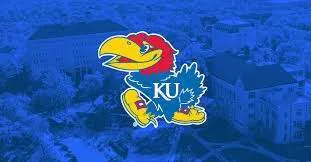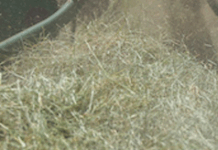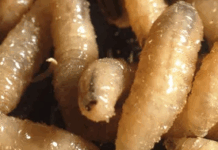From the Office of Public Affairs | http://www.news.ku.edu
Headlines
Study: Minority, immigrant populations faced misinformation, hostility when seeking COVID-19 information
LAWRENCE — When the COVID-19 pandemic swept the globe, many people turned to online sources to find health information. A new study found that racial and ethnic minority populations in the United States encountered not only misinformation online, but also unique factors such as harassment, hostility and racial animus.
Rocket Grants return, award $60K to 10 regional art projects
LAWRENCE — The 2022 Rocket Grants have awarded a total of $60,000 for 10 artist projects in the Lawrence and Kansas City area. Collectively these projects will uplift narratives of the LGBTQ+ community, trans women of color, Black histories and Indigenous voices, including a public mural by Lawrence-based artist Mona Cliff.
Karla Leeper named vice chancellor for strategic communications and public affairs
LAWRENCE — In this role, Leeper will serve as a senior advisor to Chancellor Douglas A. Girod and the university’s leadership team on issues of communications and public affairs. She will oversee all messaging to advance KU’s interests at the local, state and national levels, and she will have responsibility for marketing, branding, internal and external communications and message integration across all KU campuses, affiliates and partners.
Neighborhood provides new understanding of 17th-century Dutch art
LAWRENCE — The importance of knowing what’s going on in your neighborhood and upholding its honor is at least as old as comparable societal expectations in 17th-century Netherlands, according to a new book by a University of Kansas art historian. Numerous Dutch paintings of an array of subjects — scenes of streets, domesticity, professions and festivity — conveyed and reinforced those values to contemporary viewers.
Full stories below.
————————————————————————
Contact: Mike Krings, 785-864-8860, mkrings@ku.edu
Study: Minority, immigrant populations faced misinformation, hostility when seeking COVID-19 information
LAWRENCE — When the COVID-19 pandemic swept the globe, many people turned to online sources to find health information. That was also largely the case for racial and ethnic minority populations in the United States, and a new study from the University of Kansas found they faced many of the same challenges such as encountering misinformation online, but also unique factors such as harassment, hostility and racial animus. They also relied on media from the United States and their home countries, as well as social media for information, but were hesitant to push back against misinformation.
Mass communications researchers at KU conducted in-depth interviews in early 2021 with 49 racial/ethnic minority individuals in the Midwest who migrated to the United States since 2014 about their COVID-19 online information experiences. In addition to the findings about where and how they received information, the study also found younger and healthier people showed more resistance to being vaccinated. The findings can help scholars, digital media and health communicators develop more effective health messaging and minority communication, the researchers wrote.
The study was written by Annalise Baines, doctoral candidate in KU’s William Allen White School of Journalism & Mass Communications; Hyunjin Seo, professor of journalism & mass communications and director of KU’s Center for Digital Inclusion; Muhammad Ittefaq, of James Madison University and former KU doctoral student; Fatemeh Shayesteh, doctoral candidate in journalism at KU; Ursula Kamanga of the University of Nevada; and Yuchen Liu of Cleveland State University. The study was published in Convergence: The International Journal of Research into New Media Technologies.
The United States is home to more immigrants than any other country and was simultaneously hit hard by the pandemic. Those factors led researchers to examine how racial/ethnic minorities and immigrants navigated the pandemic and found information. Notably, most interviewees reported turning to online media from the U.S. and their country-of-origin to find information. While that information could prove helpful, it also provided an avenue for misinformation and harassment that was rampant on social media.
“We found that many of our interviewees rely on the news and social media, including Facebook and YouTube, to find health information during the pandemic. Noticeably, many participants use media sources from their country-of-origin as well as U.S. based sources. However, while these platforms allowed them to receive social support and find the necessary information about COVID-19 protections and other information, at times these networks created more stress and fear amongst the participants,” Baines said. “For instance, several interviewees described looking at and receiving hateful messages and racial slurs online, particularly among those immigrants from Asian countries. Unfortunately, these findings are not that surprising as people who migrated from Asian countries have faced xenophobia related to COVID-19 on social media since early 2020 when prominent individuals called it the ‘Chinese virus.’”
That added stress was illustrated by one interviewee, a 56-year-old woman who emigrated from South Korea.
‘I saw hateful comments toward Asian immigrants, some posts more specific to people from China, on Facebook calling them ‘spreaders of coronavirus’ while using F-words,” she said. “These experiences got me really stressed and nervous, so I didn’t want to visit even social media sites for a while.”
In addition to a hostile online environment, roughly two-thirds of participants also encountered misinformation, largely on social media such as Facebook and WhatsApp, and reported seeing it both coming from the U.S. and their countries of origin. However, they also largely reported treading carefully when deciding whether to correct or address the misinformation. They commonly wanted to consider cultural norms in both countries and expressed uncertainty in political beliefs of the person sharing the misinformation. But, when it was coming from family members or close friends, they were more likely to correct or push back against incorrect information.
Researchers also asked interviewees about their willingness to receive a COVID-19 vaccine. When asked in early 2021, as vaccines were beginning to become widely available to the public, about one-fifth said they would not get vaccinated, or at least “not for now.” The majority of those respondents were young and healthy, and they reported both a lower perceived risk or susceptibility to the virus and lower perceived benefit of a vaccine, as opposed to those who said they intended to get the shot.
Like their experiences in gathering information about the pandemic, respondents reported using both U.S. and country-of-origin media, as well as social media and information from friends and families, in making their vaccine decisions. Experience and information from friends and family most often influenced how much they trusted vaccines and their willingness to get them.
As racial/ethnic minorities and immigrants constitute a substantial part of the American population, better understanding how they obtain health information, especially during a pandemic and how that information affects vaccine willingness, can assist both researchers and those working in the health field, the research team wrote. For scholars, the study both provided new and needed empirical data on minority immigrants in terms of health beliefs and shed more light on the Health Belief Model, a theoretical framework commonly used in health research.
The findings can also help ensure accurate information is readily available for those seeking information on health-related topics such as the pandemic and how to address specific challenges such as harassment or reluctance to push back against misinformation.
“The findings from this study highlight the importance and urgency for media organizations, health care providers, policymakers and government entities to take measures to create better information environments related to COVID-19 on social media,” Baines said. “We found that two-thirds of our sample was exposed in some way to misinformation online. It is essential for relevant organizations to identify and eliminate misinformation online and provide an information hub tailored for specific populations so that any needs of underserved immigrant populations can be addressed.”
-30-
————————————————————————
The official university Twitter account has changed to @UnivOfKansas.
Refollow @KUNews for KU News Service stories, discoveries and experts.
Tweets by KUnews
————————————————————————
Contact: Elizabeth Kanost, 785-864-0142, elizacat@ku.edu
Rocket Grants return, award $60K to 10 regional art projects
LAWRENCE — The 2022 Rocket Grants have awarded a total of $60,000 for 10 artist projects in the Lawrence and Kansas City area. Collectively these projects will uplift narratives of the LGBTQ+ community, trans women of color, Black histories and Indigenous voices, including a public mural by Lawrence-based artist Mona Cliff.
Rocket Grants, a partnership of Charlotte Street Foundation and the Spencer Museum of Art, support innovative, artist-driven projects outside of established arts venues through funding from the Andy Warhol Foundation for the Visual Arts. In 2020 and 2021, Rocket Grants shifted to Rocket Relief, providing emergency grants of $1,000 to artists in need during the COVID-19 pandemic. The 2022 award cycle marks a return to the program’s original intent.
This year’s awardees were selected from a competitive pool of 65 applications and will each receive $6,000. Recipients were selected by a panel of regional jurors — Brandon Alvendia, artist, curator and educator based in Chicago; Matthew Willie Garcia, artist and studio manager at the Lawrence Arts Center; Nneoma Ilogu, curator-in-residence at the Bemis Center, Omaha, Nebraska; and Cory Imig, artist and arts administrator based in Kansas City, Missouri.
A public awards ceremony for this year’s recipients will take place Sept. 15 at Charlotte Street Foundation in Kansas City. For more information about Rocket Grants and this year’s award recipients, visit www.rocketgrants.org.
A complete list of 2022 Rocket Grants recipients:
KC Rainbow Tour / Joel Barrett
This interactive driving tour shares stories from Kansas City’s LGBTQ+ history.
Indigenous Reclaiming Spaces / Mona Cliff
This continuation of Cliff’s “Natives NOW” project will bring visibility to the Native community in Lawrence with a public mural located near Haskell Indian Nations University.
Neighborhood Heroes / Devin Edwards
This collection of murals located in the East Side of Kansas City will depict “crusaders” who grew up in this area dressed as superheroes helping their community.
“Closure is Not Justice” / Andrew Johnson, Aja Edwin Mujinga, Bryan Sheppard
This multimedia installation invites the public to reflect on memories surrounding an explosion in 1988 that resulted in the death of six Kansas City firefighters and the conviction of five people for setting the fire that caused the explosion. Project member Bryan Sheppard, who was one of the five convicted, was released from prison in 2017. He, along with the other four defendants, have maintained their innocence.
Spoken Easy Slam Series / John Lewis
This series offers a fresh take on typical open mic nights, including poetry, musicians, comedians and visual artists. Events occur in outdoor, urban settings and invite stories from artists of all ages.
“I’m So Glad” / Nancy Meis, Paul Wenske, Isaac Cates, Chris Wenske
This documentary will explore the unique legacy of Black gospel music in Kansas City. Through previously unshared stories, photos and music, the film celebrates the heritage of Kansas City’s Black musicians, their impact on gospel music and their contributions on a national level.
“Only the Wounds and Weapons Have Changed” / Scott Myers, Jacqueline Gafford, Frances Farah
This original play about Black history features lesser-known figures who played key roles in the struggle for liberation. Significant scenes from the play will be staged at spaces in four Kansas City public libraries.
core. / Brittany Noriega
“Core.” is an artist-run, noncommercial art zine that highlights Kansas City creators. It showcases artists from all creative backgrounds and is free to the public at nine locations throughout Kansas City.
Snapping Back: A Trans Women of Color Sex Workers + Artist Empowerment Project / Kelly Nou, Fynelle Fristoe, Merrique Jenson, Nyla Foster, Tre’Shawn Seymour
This immersive project will combine dance, voguing, spoken word and short documentary narratives at a historic venue near Troost to highlight trans women of color.
ArtMoves / Regina Nouhan and Dwight Smith
This multimedia project of videos and podcasts highlights the vibrant pool of visual artists in Kansas City and the Midwest.
-30-
————————————————————————
Subscribe to KU Today, the campus newsletter,
for additional news about the University of Kansas.
http://www.news.ku.edu
————————————————————————
Contact: Joe Monaco, 785-864-7100, jmonaco@ku.edu
Karla Leeper named vice chancellor for strategic communications and public affairs
LAWRENCE — Karla Leeper, executive vice president for operations at Augusta University/Augusta University Health System in Georgia — and a KU alumna — will become the University of Kansas’ vice chancellor for strategic communications and public affairs, effective Nov. 1.
In this role, Leeper will serve as a senior advisor to Chancellor Douglas A. Girod and the university’s leadership team on issues of communications and public affairs. She will oversee all messaging to advance KU’s interests at the local, state and national levels, and she will have responsibility for marketing, branding, internal and external communications and message integration across all KU campuses, affiliates and partners.
“Karla’s extensive background in communications, public affairs and higher education administration, coupled with her experience as a full-time faculty member in communication studies, make her an ideal fit for this position,” Girod said. “I have no doubt she will immediately benefit our efforts to elevate KU’s status, attract top students and scholars, and improve in every aspect of our mission.”
In her current role with Augusta University/Augusta University Health System, Leeper oversees marketing and communications, facilities and human resources. Prior to that, from 2015-2018 she served as the institution’s executive vice president for strategic communication and chief marketing officer. Before joining Augusta University, she served as a tenured faculty member in communication studies, vice president for board and executive affairs and chief of staff to the president at Baylor University. She received her doctorate and master’s degrees from KU and her bachelor’s degree from the University of Iowa.
“I am thrilled to be coming back to serve the University of Kansas,” Leeper said. “It will be an honor to come to work every day with the mission of sharing the stories of the great work being done by our faculty, staff and students.”
Leeper succeeds David Cook, who served as vice chancellor until spring 2022, when he left KU to become the president of North Dakota State University.
-30-
————————————————————————
Don’t miss new episodes of “When Experts Attack!,”
a KU News Service podcast hosted by Kansas Public Radio.
https://kansaspublicradio.org/when-experts-attack
————————————————————————
Contact: Rick Hellman, 785-864-8852, rick_hellman@ku.edu
Neighborhood provides new understanding of 17th-century Dutch art
LAWRENCE — The importance of knowing what’s going on in your neighborhood and upholding its honor is at least as old as comparable societal expectations in 17th-century Netherlands, according to a new book by a University of Kansas art historian. Numerous Dutch paintings of an array of subjects — scenes of streets, domesticity, professions and festivity — conveyed and reinforced those values to contemporary viewers.
That is Linda Stone-Ferrier’s conclusion after analyzing a range of 17th-century Dutch Golden Age paintings in a new context: that of the neighborhood. Her book, “The Little Street: The Neighborhood in Seventeenth-Century Dutch Art and Culture,” is just out from Yale University Press after a 14-year process of research, writing and editing.
A professor of 17th-century Dutch and Flemish art in KU’s Kress Foundation Department of Art History, Stone-Ferrier realized she would begin research for a book like “The Little Street” when, by chance, she read an article about 17th-century Netherlandish neighborhoods by the sociologist Herman Roodenburg.
“I knew no art historian had ever talked about the neighborhood, which Roodenburg made very clear was a significant organizing unit for social control and social exchange,” Stone-Ferrier said. “No art historians of Dutch art had ever addressed the neighborhood as an interpretive context for the study of Dutch paintings.”
In the book’s introduction, she wrote that studies by art historians tend to silo works by subject matter, like landscapes or scenes of daily life, “presum(ing) that each category raises interpre¬tive issues distinct from the others. In a revision of that par¬adigm, I argue that certain seemingly diverse subjects share the neighborhood as a meaningful context for analysis.”
In addition, Stone-Ferrier wrote, her book challenges scholars’ assumptions that categorize “imagery in paintings within a binary construct of ‘private,’ understood as the female domestic sphere, versus ‘public,’ synonymous with the male domain of the city …”
The neighborhood was a “liminal space” between home and city that encompassed people of every gender, religion, social class, nationality and political persuasion, she wrote. In fact, Dutch citizens of the 1600s were required to officially belong to and participate in their neighborhood organizations – much like today’s homes associations – which collected membership dues, enforced neighborhood rules, and hosted mandatory meetings and annual group meals. Thanks to some exquisite recordkeeping from centuries ago and today’s digital resources, Stone-Ferrier was able to research, among other things, relevant subjects of paintings and the identity and professions of Dutch citizenry who owned them that informed her research. Art collecting was important, Stone-Ferrier said, to a broad and deep urban middle class whose wealth was generated by such trading enterprises as the Dutch East and West India companies.
And it’s clear, from an analysis of that art and an array of documents, that what was going on down the street and around the corner was important to Dutch people of that time – just as it is to people in neighborhoods around the world today.
“Honor is the word the Dutch used in in their neighborhood regulations and in other contexts, too,” Stone-Ferrier said. “Honor had to do with how one behaved. To act honorably in all endeavors — personally, at home, in your business — was valued highly. An individual’s honor or dishonor reflected on that of the whole neighborhood. That was an integral tie. That’s why there was gossip and documented witness statements regarding the behavior of one’s neighbors.”
One chapter is subtitled “Glimpses, Glances, and Gossip” because — like today — not only are people curious about what the neighbor across the street is doing in his driveway, or what is going on with those Rottweilers around the corner, but they want to make sure people are not misbehaving or breaking communal rules.
Paintings showing scenes of people upholding neighborhood virtues both reflected and reinforced those values, Stone-Ferrier wrote.
-30-
————————————————————————
KU News Service
1450 Jayhawk Blvd.
Lawrence KS 66045
Phone: 785-864-3256
Fax: 785-864-3339
kunews@ku.edu
http://www.news.ku.edu
Erinn Barcomb-Peterson, director of news and media relations, ebp@ku.edu
Today’s News is a free service from the Office of Public Affairs





